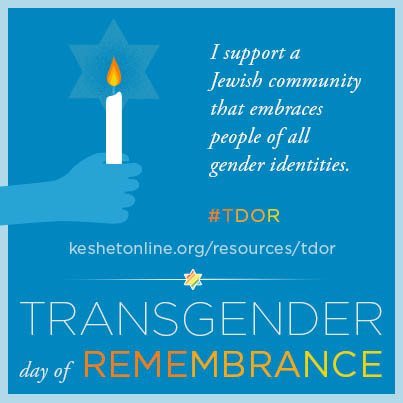We have someone in our congregation who is transgender. We want them to feel welcome, but have no experience with this issue. What are some things we should think about?

What makes a place holy? What defines a sanctuary? These are the questions a congregation must ask itself as it thinks about issues of inclusion, for transgender and gender-queer people, for people of color, for people of different faiths, and socio-economic class experiences. Holiness is a question rooted in difference; in a verb whose root means distinction. Holiness lies in our ability to honor and transcend difference. How can you make your congregation or organization welcoming for transgender and gender-queer people? How can you make it a sanctuary?
- Be open to learning. Know that the personal is political. We have all internalized transphobia and we all must do the work of liberating our minds from the strictures of a binary gender (man/woman) system. Gender liberation is a communal journey, for everyone. Reflect on your personal experience of gender. Read memoirs. Pay attention to gender dynamics in the spaces you inhabit.
- Allow trans people to speak for themselves. Invite in guest speakers and host workshops.
- Ask your congregants what pronouns they prefer and respect their self-definition. Model this practice by naming your own preferred gender pronouns.
- Create and publicize gender-neutral bathrooms.
- Remove binary-gendered language from your congregation’s messaging, whether verbal or written. For example, instead of “boys and girls” or “men and women,” try saying “people of all genders.”
- Talk about issues that affect the lives of trans people from the bimah and in curricula.
- Respect people’s rights of privacy. Do not ask questions about people’s bodies or transitions. Allow people to set their own boundaries for self-disclosure.
At Temple Shir Tikvah, we convened a committee to work on issues of trans inclusion for a full year. Some of the resources we recommend are TransTorah.org and The Trans Ally Guidelines. Our work is ongoing. We believe that the work of gender liberation and trans inclusion is holy work. As we approach Transgender Day of Remembrance, our hearts grieve the tragic loss of so many transgender people, particularly trans women of color. May the work we do to build holy spaces help to make their memories a blessing.
Rabbi Rim Meirowitz is the rabbi at Temple Shir Tikvah, a Reform synagogue in Winchester.
Ari Lev Fornari is the rabbinic intern at Temple Shir Tikvah.
Learn more about Transgender Day of Remembrance with Keshet’s 10 resources for the day.
Additional resources for trans allies are available at Ritualwell.
This post has been contributed by a third party. The opinions, facts and any media content are presented solely by the author, and JewishBoston assumes no responsibility for them. Want to add your voice to the conversation? Publish your own post here. MORE


